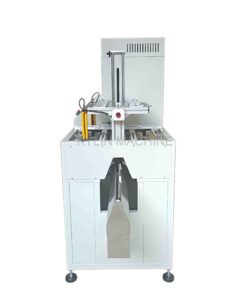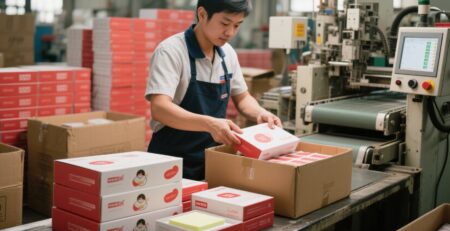Book casing in machine Tips & Techniques for a Perfect Finish
Book casing in machine is a process that encases books in protective coverings. This process helps to protect books from wear, tear, and other elements that can cause damage over time. Book casing typically involves wrapping an outer material, such as plastic or vinyl, around the book and then applying adhesive to the back and sides in order to secure the cover. This process can also be used to help waterproof books and make them easier to carry. Book casing is an effective way to preserve the condition of books and make them last longer.
B. Benefits of book casing in machine
Book casing in machine is an innovative technology that allows books to be stored and accessed in a much more efficient manner. This technology is especially beneficial for libraries that require a large amount of books. Book casing in machine allows books to be stored in a safe, secure, and organized manner without taking up too much space.
One of the major benefits of book casing in machine is that it eliminates the need for physical shelf-space. Instead of needing large amounts of space to store books, book casing in machine can store large amounts of books in a relatively small area. This makes libraries more efficient and able to store more books for their patrons.
Another benefit of book casing in machine is that it allows for quick and easy access to the books. This means that patrons no longer need to search through endless shelves to find the book they are looking for, as the book casing technology will provide them with the information they need.
Finally, book casing in machine is beneficial for libraries in terms of cost savings. Since books can be stored in a much more efficient manner, libraries no longer need to purchase additional shelves and furniture for storing books. Instead, they will only need to purchase the book casing machine, which can provide a much more cost-effective solution in the long-run.
II. How Book Casing In Machine Works
A. Step-by-Step Overview
Book casing in machine is a revolutionary machine that helps in book binding. This machine can be used to case in books quickly and easily, without the need of a separate casing-in press. It is designed to be used with different types of books, from paperback to hardcover and large format. It is also suitable for smaller publishers and even individuals who wish to perform their own book binding.
The book casing in machine is made up of a number of components, which include a control panel, clamps, feed motor, gears, and a cutting blade. The control panel is used to control the speed at which the machine operates, allowing the user to easily adjust the speed to suit the size and shape of the book being bound. The clamps are used to hold the book in place, while the cutting blade cuts the book’s spine in order to create the casing. The feed motor powers the gears, which move the clamps and cutting blade.
B. Components Used
Book casing in machines is a process where books are encased in a protective casing to protect them from dust, pests, moisture, and other environmental elements to ensure that they are preserved. This process involves using a specialized machine to hermetically seal the books in a protective casing. The book casing machine typically consists of a number of components such as a feeder, a sealer, a timer, and a cutter. The feeder is used to feed the books into the machine, while the sealer is used to create an airtight seal. The timer is used to regulate the sealing time, while the cutter is used to trim off any excess material from the books once they are sealed. This process ensures that the books remain in pristine condition for future use and can be safely stored for extended periods of time.
III. Advantages of Book Casing In Machine
A. Speeds Up Production
Book casing in machines is an efficient and cost effective way to improve production speeds in the printing and publishing industry. The process involves the automatic installation of leather, plastic, and other types of covers onto books at high speeds. This automation reduces labor costs, increases throughput and reduces the amount of time it takes to produce books, allowing for faster delivery to the customer.

By installing the book casing with a machine, books can be processed and produced in large batches for mass production. This technology also provides consistency in the quality of the book covers, ensuring that each book looks the same regardless of the speed of production. This is beneficial to both the publisher and printer since it ensures a consistent product that meets the customer’s expectations. In summary, book casing in machines is an overall cost-effective and efficient way to speed up production while still providing a quality product.
B. Fewer Mistakes Made
Book casing in machines is a process that helps to ensure that books are accurately packaged for distribution. This process is important for publishers, distributors, bookstores, and libraries, as it helps to guarantee that books are packaged precisely and safely. Book casing in machines helps to reduce the number of mistakes that may arise from human labor, such as mislabeling, miss-wrapping, and incorrect sizing. It also helps to save time by eliminating manual labor and tedious errors, thereby speeding up the process of packing and dispatching books to their respective destinations. With book casing in machines, book publishers, distributors, bookstores, and libraries can rest assured that their books are safely and correctly packaged, thus making the life of their staff much easier.
C. Cost Savings
Book casing in machine is an innovative technology that allows businesses to cut manufacturing costs and maximize efficiency. It provides a cost-effective way to store and protect books during the production process. It also helps to better manage production materials, optimize storage and reduce inventory costs. With book casing, businesses can reduce the time and costs associated with manual labor and shipping costs. Book casing also increases production speeds, allowing businesses to meet customer demand more quickly and efficiently. The result is a reduction in costs, which can be passed on to the customer through the form of savings.
A. High Initial Investment
Book casing in a machine is a great way to package and protect books from damage during transport, storage, and distribution. This method of book casing is both efficient and cost-effective, but has a high initial investment cost.
The cost of the machinery used to case the books can be significant, but the long term savings and protection that it provides to the books outweigh the cost of the machine. The book casing machine is extremely versatile and can be used to case books of all shapes and sizes, allowing for a wide range of book types to be safely stored.
This method of book casing also conserves energy, as it uses fewer resources to produce an effective packaging solution. The book casings can also be recycled after use, making them an eco-friendly choice for book protection.
Though the initial investment in a book casing machine may be high, the long term savings and protection it provides make it an effective choice for the safe storage and distribution of books.
B. High Maintenance Costs
Book casing in machines can be a costly and time-consuming endeavor. With the increasing complexity of technology, the cost of book casing can quickly add up. Not only do you need to install the casing, but you also have to maintain it. Maintenance costs can be high, since you will have to continually replace parts, check for wear and tear, and run tests. In addition, there is the risk of damage to the machine if the casing is not properly maintained. The bottom line is that book casing in machines can be a significant expense that should be carefully weighed against the benefits of the technology.
A. Summary of Book Casing In Machine
The Book Casing In Machines is a revolutionary technology that is changing the way books are packaged and shipped. It is a fully automated device that is designed to quickly and efficiently case books into protective cases. It can be used to case any size book and is a cost-efficient way to package them. The system uses robotic arms to pick up the book, open and close the case, and insert the book into the case. It can then be shipped with the confidence that the book is safely and securely packaged. This technology is already being utilized by major booksellers and distributors, and will help to reduce costs, improve productivity, and increase customer satisfaction.
B. Benefits of Investing in Book Casing in Machine
Book-casing in machines is a process that aims to package books and other materials in a very efficient manner. It uses advanced technological components, such as robotic arms, motors and control systems, to quickly and accurately wrap books and other materials in special book-casing materials. By investing in book-casing machines, you can reduce labour costs, increase production capacity and improve the book’s quality.
The main benefit of investing in book-casing machines is that it reduces labour costs in the long run. Book-casing machines can be configured to handle multiple books, at a single time. This eliminates the need for multiple people, who are typically needed to manually wrap books. It also lowers production costs, as it takes less time to wrap each book, thus reducing the overall cost per book.
Another advantage of book-casing machines is that it increases production capacity. The machines can quickly handle large numbers of books, thus enabling a higher number of books to be automatically packaged in one day. This can help you to expand your book-casing business, as you can now handle a larger volume of books.
Book-casing machines also improve the quality of the book’s packaging. By using modern wrapping technologies, the books and other material will be tightly packaged with precision and accuracy. This reduces the risk of books being damaged during transport or in storage.
In summary, investing in book-casing machines is a cost-effective and efficient way to package books and other material. It reduces labour costs and increases production capacity, while also improving the quality of the book’s packaging.








发表回复